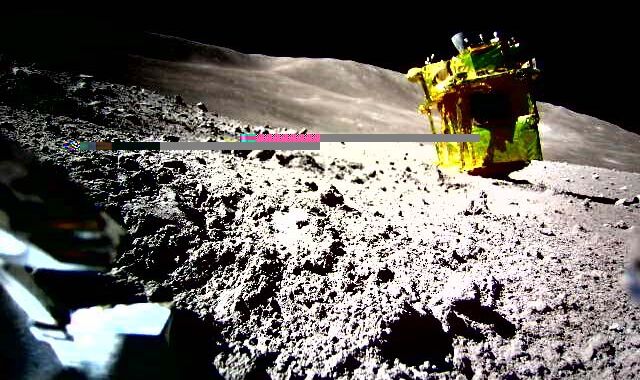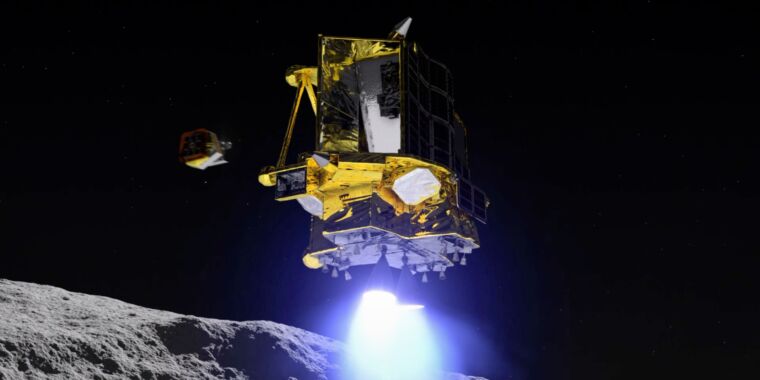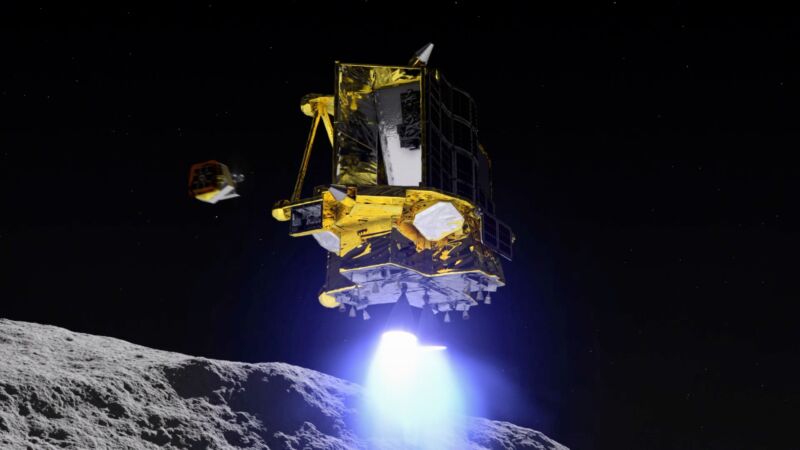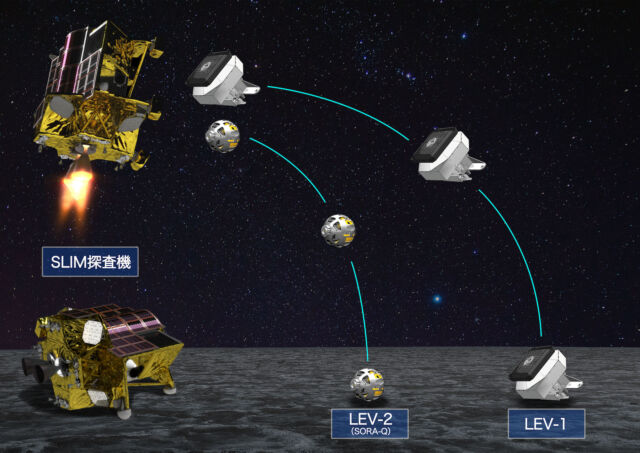A Japanese spacecraft faceplanted on the Moon and lived to tell the tale
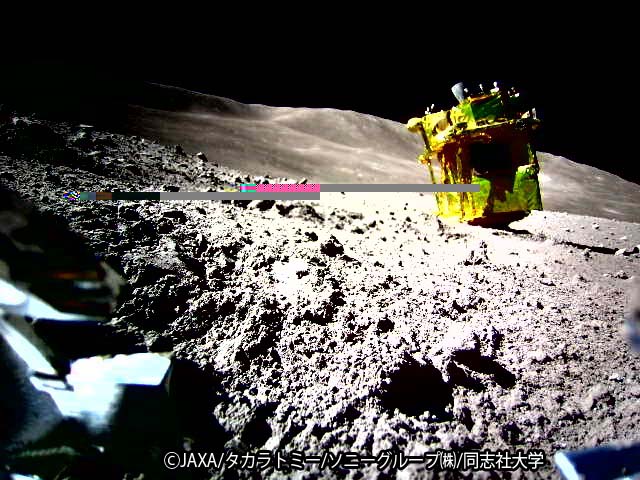
Japan’s SLIM spacecraft is seen nose down on the surface of the Moon.
Japan’s first lunar lander made an unsteady touchdown on the Moon last week, moments after one of its two main engines inexplicably lost power and apparently fell off the spacecraft, officials said Thursday.
About the size of a small car, the Small Lander for Investigating Moon (SLIM) landed on Friday, making Japan the fifth country to achieve a soft landing on the lunar surface. Shortly after landing, ground teams in Japan realized the spacecraft was not recharging its battery with its solar panels. The evidence at the time suggested that SLIM likely ended up in an unexpected orientation on the Moon, with its solar cells facing away from the Sun.
With the benefit of six days of data crunching and analysis, officials from the Japan Aerospace Exploration Agency (JAXA) briefed reporters Thursday on what they have learned about SLIM’s landing. Indeed, the spacecraft toppled over after touching down, with its nose planted into the lunar regolith and its rear propulsion section pointed toward space.
It turns out that SLIM overcame a lot to get to that point. In the final minute of Friday’s descent, one of SLIM’s two engines failed, leaving the craft’s sole remaining engine to bring the spacecraft in for an off-balance landing. Still, JAXA officials said the spacecraft achieved nearly all of its primary objectives. The roughly $120 million robotic mission made the most pinpoint landing on the Moon in history, just as it set out to do.
“From the spacecraft, we were able to acquire all the technical data related to navigation guidance leading to landing, which will be necessary for future pinpoint landing technology, as well as navigation camera image data during descent and on the lunar surface,” JAXA said in a statement.
One of two tiny robots released by SLIM just before landing relayed a remarkable image of the lander standing upside down a short distance away. This might be the first close-up view of a crash landing, however gentle, on another world.
One plucky bird
Based on the update JAXA released Thursday, it’s extraordinary that SLIM made it to the surface in one piece.
After launching in September and arriving at the Moon in December, SLIM lined up for a final descent to the lunar surface on Friday. Around 20 minutes before landing, the spacecraft ignited its two hydrazine-fueled rocket engines for a braking maneuver to drop out of lunar orbit.
JAXA officials said everything went according to plan in the initial phases of the descent. The spacecraft pitched over from a horizontal orientation to begin a final vertical descent to the surface. SLIM’s guidance computer was preloaded with a map of the landing zone, and an onboard navigation camera took pictures of the Moon’s surface throughout the landing sequence. The spacecraft’s computer used these images to compare to the map, allowing SLIM to autonomously correct its course along the way.
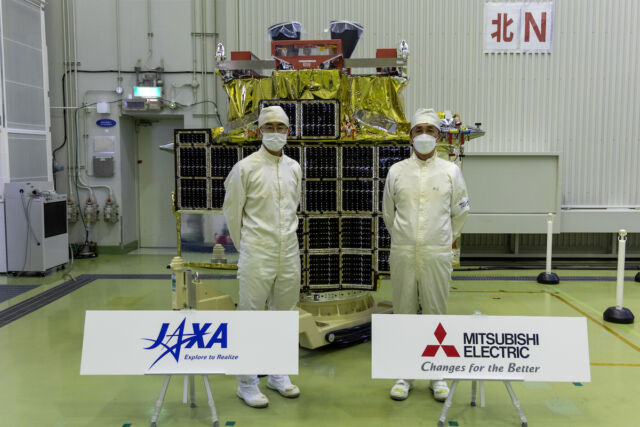
Enlarge / The SLIM spacecraft was built by Mitsubishi Electric under contract with JAXA.
JAXA
But at an altitude of around 160 feet (50 meters), something went wrong with the spacecraft’s propulsion system. Less than a minute before touchdown, one of the engines suddenly lost thrust, and moments later, a down-facing navigation camera caught a glimpse of what appeared to be one of the engine nozzles falling away from the spacecraft. JAXA said engineers believe the engine failure was likely caused by “some external factor other than the main engine itself.” Officials are still investigating to determine the root cause.
The spacecraft continued descending on the power of its remaining engine, but it became more difficult to control the lander. The thrust from the single engine imparted a sideways motion to the spacecraft. Normally, SLIM would have used thrusters to tilt itself from the vertical orientation necessary for the final descent and into a position to plop itself on the lunar surface along the spacecraft’s long axis. SLIM had five crushable landing legs to absorb the force of the gentle impact.
While this two-stage landing sequence was the plan, JAXA said Thursday that the spacecraft “touched the ground in an almost straight standing position with lateral velocity.” The vertical speed at touchdown was about 3.1 mph (1.4 meters per second), slightly slower than the expected descent rate.
“Because the ground contact conditions such as lateral speed and attitude exceeded the specification range, a large attitude change occurred after touchdown, and the aircraft settled in a different attitude than expected,” JAXA said.
In other words, the squirrelly landing caused the spacecraft to tip over. SLIM settled in a bottoms-up position on a shallow slope rather than on its side. Its solar panel wasn’t facing up but was instead pointed toward the west, away from the Sun’s position in the eastern morning sky at the landing site.
A Japanese spacecraft faceplanted on the Moon and lived to tell the tale Read More »
